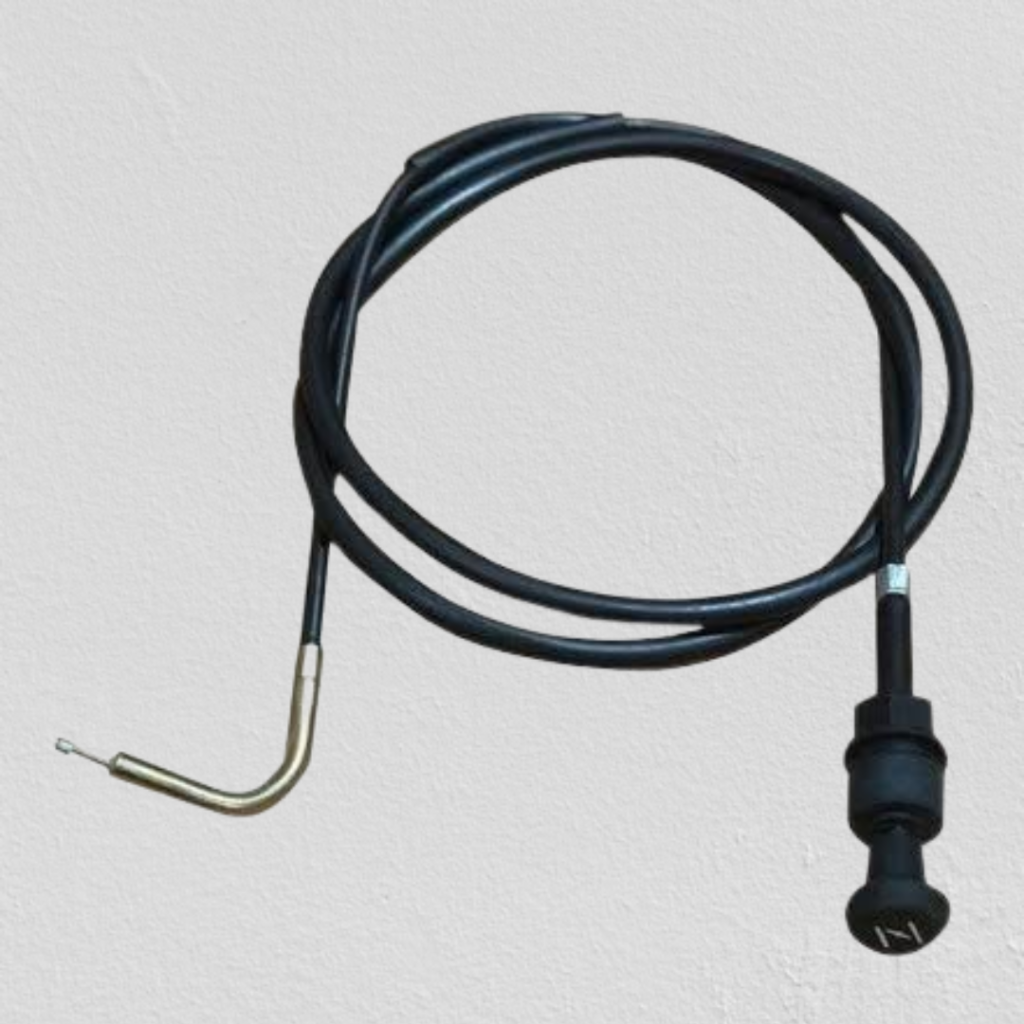
What is a Choke Cable?
A choke cable is a mechanical component that controls the position of the choke valve in internal combustion engines. The choke valve, in turn, regulates the amount of air entering the engine, which directly affects the air-fuel mixture. By adjusting this mixture, the engine starts more easily in cold conditions and runs more efficiently.The Role of Choke Cables
Starting the Engine: Engines need a richer fuel mixture (more fuel and less air) to start effectively in cold conditions. The choke cable controls the choke valve, which partially closes the throttle, restricts the airflow, and enriches the mixture. This adjustment facilitates easier starting in low temperatures. Warm-Up Adjustment: As the engine warms up, the choke valve gradually opens to return to a normal air-fuel mixture. The choke cable allows for this gradual adjustment, ensuring smooth engine operation and preventing stalling. Idle Performance: Proper adjustment of the choke valve affects the engine’s idle speed and stability. A well-functioning choke cable keeps the valve in the optimal position for different operating conditions.Construction of Choke Cables
Choke cables consist of several key components:- Cable Core: The inner core of the cable, typically made of steel or another durable material, transmits the movement required to operate the choke valve.
- Cable Sheath: Encasing the core, the sheath is made from a flexible material like rubber or plastic. It protects the core and ensures smooth operation.
- Control Handle: The driver or operator interacts with this part, often located on the dashboard or near the engine compartment. It adjusts the choke valve.
- Attachment Points: These secure the ends of the choke cable to the choke valve and the control handle, ensuring proper operation.
Types of Choke Cables
- Manual Choke Cables: Drivers manually adjust the choke valve using a control handle in this system. You commonly find these in older vehicles or machinery.
- Automatic Choke Cables: These systems use sensors and electronic controls to adjust the choke valve based on engine temperature and other factors. Modern vehicles frequently use these systems.
- Semi-Automatic Choke Cables: Combining manual and automatic features, these systems require initial adjustments from the driver but offer automatic fine-tuning based on engine conditions.
Applications of Choke Cables
- Automobiles: Cars, particularly older models with carbureted engines, commonly use choke cables. They are crucial for starting and warming up the engine.
- Motorcycles: Motorcycles use choke cables to adjust the air-fuel mixture during cold starts, helping achieve optimal performance and smooth operation.
- Small Engines: Choke cables are also found in small engines used in lawn mowers, generators, and other equipment. Proper adjustment ensures reliable starting and efficient operation.
- Marine Engines: Boats and other marine vehicles rely on choke cables to manage engine performance in various water conditions. These cables help ensure the engine runs smoothly and efficiently.
Maintenance and Troubleshooting
- Regular Inspection: Regularly inspect the cable for signs of wear, fraying, or damage. Ensure the connection points are secure.
- Lubrication: Apply lubrication to the cable core to maintain smooth operation. Use a suitable lubricant designed for automotive cables.
- Adjustments: If the engine has starting problems or idle issues, you may need to adjust the choke cable. Check the vehicle or equipment manual for the correct adjustment procedure.
- Replacement: Replace the choke cable if it is damaged or worn beyond repair. Ensure the replacement cable is compatible with your vehicle or equipment.
Common Issues :
- Sticking or Binding: Over time, the choke cable may become sticky or bind, making it difficult to operate. This issue can lead to poor engine performance and starting problems.
- Fraying or Breaking: The cable core may fray or break, especially if the cable is old or has experienced excessive wear. This situation results in a non-functioning choke system.
- Loose Connections: Loose or disconnected cables can prevent the choke valve from operating correctly, leading to engine performance issues.
Innovations :
Advancements in automotive and engine technology have introduced innovations in choke cable systems:- Electronic Choke Systems: Modern vehicles increasingly use electronic choke systems that eliminate the need for mechanical cables. These systems provide precise control and improve engine efficiency.
- Improved Materials: New materials and coatings enhance the durability of choke cables and resistance to environmental factors, extending their lifespan.
- Integrated Controls: Some vehicles feature integrated control systems that combine choke adjustment with other engine management functions. This integration simplifies operation and improves performance.
Conclusion
Choke cables, though often overlooked, are crucial for the efficient operation of internal combustion engines. Whether in automobiles, motorcycles, small engines, or marine vehicles, these cables ensure proper air-fuel mixture adjustments for starting and running the engine. Regular maintenance and timely replacement of cables are essential for optimal performance and reliability. As technology evolves, innovations in choke cable systems continue to enhance engine management and performance. Understanding and maintaining your choke cables can lead to smoother engine operation and a better overall driving or operating experience. Find the Atom Gold difference today – where the heritage of the past is merged with the technology of the future, and quality is the standard.For more information about our products or to place an order, visit our website or contact us at our office in Ghaziabad, UP. Let us help you drive with confidence, powered by the best accelerator cables in the industry. Visit us at -Shree Radha Nath Automotive Pvt Ltd , Plot No-35, NCR Industrial Park GT Road Sahibabad, Near Raj Bagh Metro Station, Ghaziabad, UP -201005. Mobile- 9873097340, 82870 63431 Ghaziabad, Uttar Pradesh, India 201005

I need Hero honda Hunk Choke cable is it available if it’s then if You people can send me it would be better ..!